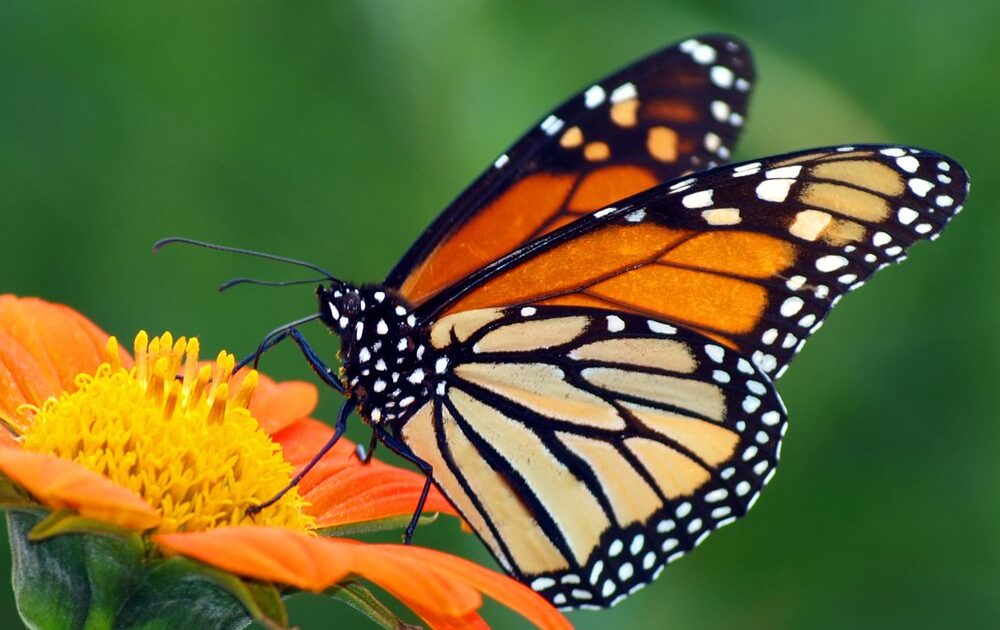Monarch Butterflies on the Rebound as Milkweed Planting Increases

Monarch butterflies are returning to their natural winter habitat in Mexico after several years of decline, according to a recent report. This is the second year running that the number of butterflies wintering in Mexico has risen, with 9.1 acres occupied by the butterflies in the fir tree forests of Michoacan this year, nearly four times as many as last year.
Jorge Rickards of the World Wildlife Fund in Mexico says that this may be due to the higher presence of milkweed along the migratory route, some 2,500 miles from Canada to Mexico. The Obama administration has worked with President Pena Nieto and Prime Minister Harper to plant more milkweed along the route after earlier reports cited the decline of the plant as a key problem linked with the diminished numbers of monarch butterflies.
Milkweed is not only the primary food source of monarch caterpillars; it is also the only plant on which the butterflies lay their eggs. The plant decreased 21 percent in the United States between 1991 and 2013; the butterfly count in Michoacan at this point had reached 1.6 acres, its lowest since 1996.
The decrease of milkweed and subsequent disappearance of butterflies has been linked to Monsanto’s Roundup, which targets milkweed plants, amongst others that could threaten its GM Roundup Ready corn and soybeans. Other issues linked to the decline of the butterfly include illegal logging in Mexico, which has destroyed parts of the butterflies’ natural habitat, as well as climate change, as warmer temperatures threaten the monarch eggs.
While these increasing numbers of butterflies are encouraging, NPR’s reporter was quick to note that we have a long way to go, as numbers are still down from 20 years ago, when 45 acres of the fir forests were occupied by the butterflies, five times the current total.
National Geographic reported in 2014 that the monarch butterfly decline was “particularly troubling, because monarchs have long been considered both an indicator of our ecological health and a representative of pollinator problems.”
Related on Organic Authority
Report Finds Monsanto’s Roundup Directly Responsible for Declining Monarch Butterfly Populations
Monarch Butterfly Migrations Major Casualties of Genetically Modified Crops
EPA Revokes Approval of Enlist Duo Weed Killer Due to Butterfly Deaths
Monarch butterflies image via Shutterstock

